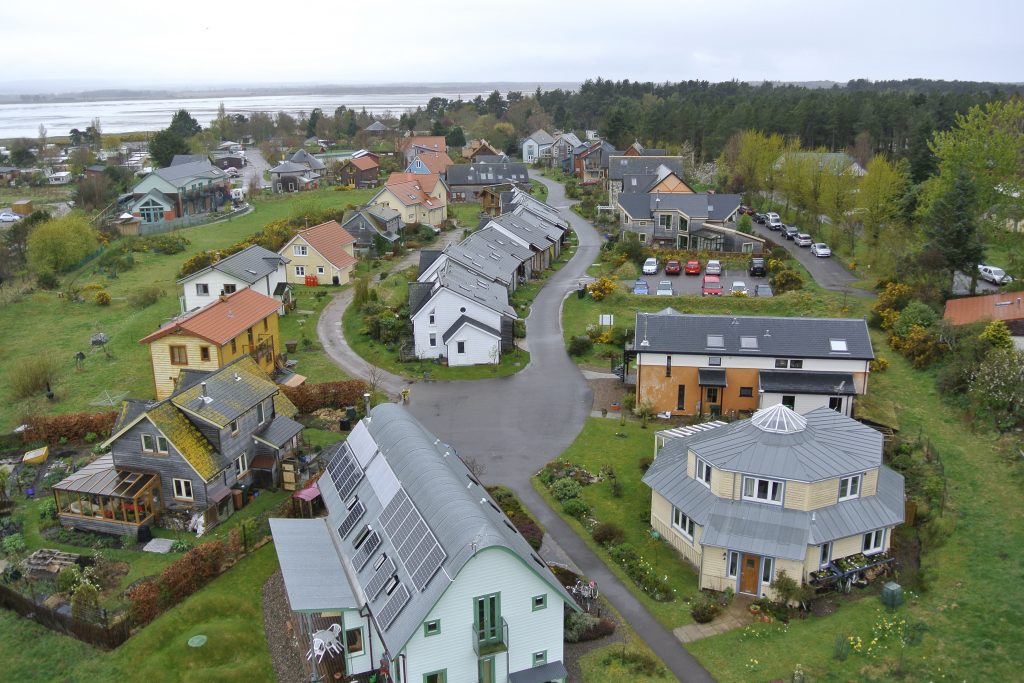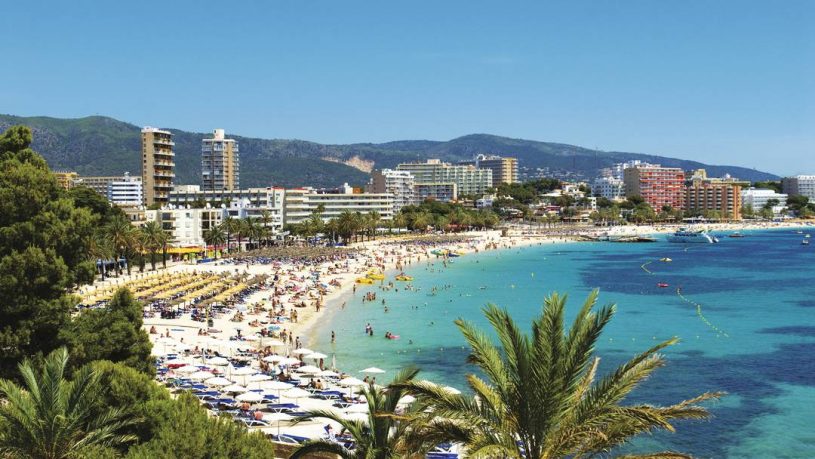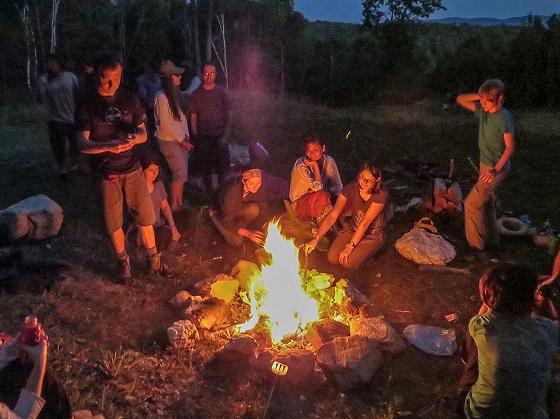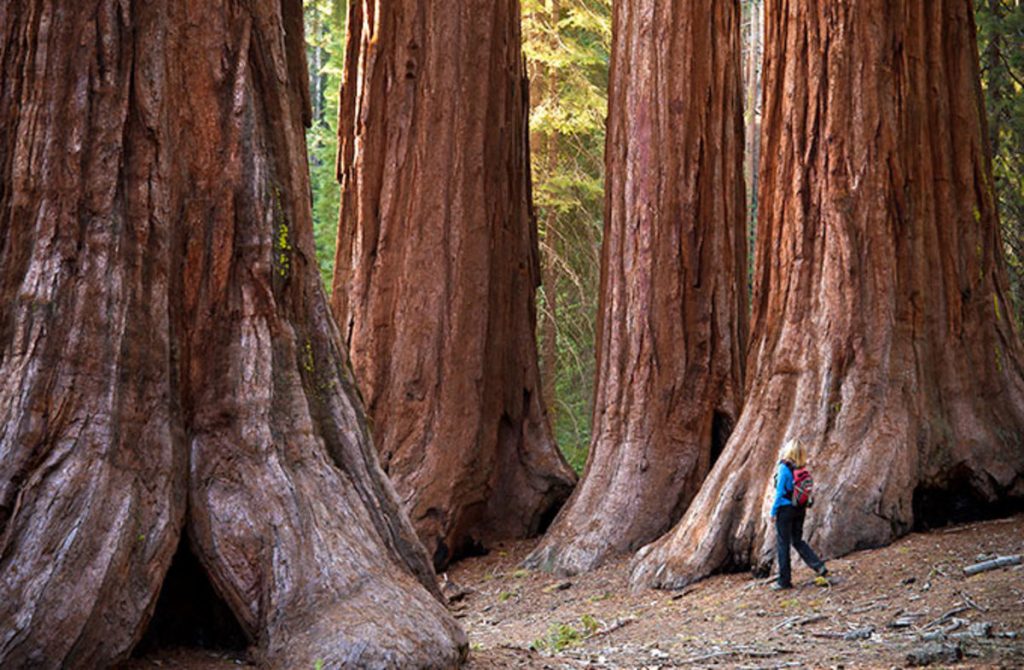Bioregions and Regeneration | Honoring the Places Where We Live
(Editor’s note: This conversation was recorded as part of the Communities for Future Online Summit, a response to the climate emergency. It is possible to purchase unlimited access to all the video interviews of the Summit here.)
Kosha Joubert | Daniel, I remember that last year after the report of the Intergovernmental Panel on Climate Change, you said that “we have to do the impossible because the probable is unthinkable.” And also you said that we need a “complete transformation of our human presence on the planet.” Those two phrases really stayed with me, and since then a lot has happened.
We’ve had more and more people speaking about climate change. We’ve had Fridays for Future, Extinction Rebellion, Take to the Streets; and Greta’s become the Time Person of the Year 2019. And, yet, in terms of climate action, we’re lagging frighteningly behind what would be needed in terms of a response, an adequate response.
Maybe I’d like to start just by asking you: how are you seeing these developments in the world at this moment? I also know that you’re an extremely loving father, with a very beautiful daughter, who’s growing into this world. So yeah, how is it for you? How do you experience this? What are your hopes and fears?
Daniel Wahl | Thank you so much for re-inviting me. It is wonderful to have this conversation with you. And starting with a big question, particularly bringing Lucia, my daughter, into my awareness. I think what we’ve seen over this year is that all the reports on how quickly climate change is advancing have been wrong; it’s even faster. The interacting feedback loops are so daunting, really, that when you look at the climate science, the “probable” looks grim. Therefore, we really need to live in that space of accepting that something is dying away.
Patterns need to break down in order to quickly respond, to rearrange our response to this in such a way that we still have a chance to create a viable future. I was at the [International] Reporting 3.0 Conference last June, where I had the pleasure of sharing a session with Nora Bateson. It’s a wonderful community that is trying to transform the business world from within, and bring all these transformative ideas to the business world, but it’s still running against the boundaries of that world that want to maintain its structures. Nora invited everybody, after two days of talking about transformative change, to say, “Look, we really need to ask ourselves every time we use that word, transformation: are we going to end up with caterpillars with wings or are we going to end up with butterflies?”
Ending up with butterflies means daring to let go of caterpillars, all the patterns that really don’t serve anymore. I think all of us—individually in our own lives and culturally in our communities and wider—we’re all at different levels of letting go of old patterns. I believe it is in community that we can repattern our being so our doing can be truly transformational. I’m personally in a glocal dilemma: how do I continue to engage in the conversation that we need to have globally and the weaving of networks globally to support each other and show solidarity and knowledge exchange, while at the same time, not allow that to distract too much energy from all the deep work that we now have to do in our bioregions.
I’ve really grown into feeling that the locus of focus, and where the real change is going to happen, is where communities in a region start to work with the givens of that region. The redesign of human presence on Earth must move away from the straight lines of national boundaries and outdated maps reflective of colonization, and instead, come back to a biophysical map, like that wonderful Robert Szucs map of all the river systems of the world, where each river is a different color.


That’s a pattern of nature. How do we fit ourselves, as human beings, back into that kind of patterning, so our presence is that of a healing keystone species in the ecosystem that we inhabit? It’s a massive question, and there are a 150 objections that it’s never going to happen to people in the cities, etc. But we really need to let go of all those patterns and have these conversations about repatterning the future in the present through place-based loving again.
We do this by sourcing our solutions from the opportunities and the limitations of the place, and listening to the ancient wisdom of how people have lived in that place over millennia before modernity sidelined their patterns as “primitive.” At the same time, we understand that we’ve meddled with the system to the point that we can’t just stop using modern technology. That genie is out of the box. So, how do we wisely use technology? When it is appropriate. And we don’t use technology that we don’t need, even if we can make a business out of it, because that’s not the point anymore.
Kosha | Now I have this strange image in my head about these caterpillars with wings trying to fly versus butterflies flying! Can you just speak about the difference between the patterns that we need to let go of and maybe the knowledge systems or patterns that we need to reconnect to? How do we know which ones?
Daniel | Exactly, that’s the deep wisdom. In my book, I have this obsession with living the questions. I probably write that sentence more than anything else in that book. It is about shifting away from the permanence of solutions, which is an illusion because the world is constantly changing and the juice is really in living the question and understanding that every solution we do implement is just helping us ask better questions, but it will never be final. We’ll never get there. We will always have to adapt, learn, transform, change, grow, evolve. That’s what life is about. Creating conditions conducive to life means being sensitive to which patterns serve the health and wholeness and vitality, resilience and adaptability of that larger system that isn’t just the context of us, but that we are actually expressions of.
At the moment, maybe degenerate expressions of that are destroying our health, but because of it, we can also reintegrate in wiser ways. So, what patterns to keep? What patterns to reenergize? And what patterns to let go of? There are people repatterning the future in the present. There are people living different ways of interacting with each other, having a different understanding of the connection between nature and humanity, self and world, theory and practice. And understanding that my attitude—my state of being—actually has causal agency in the world everywhere. Living that as a community is repatterning the future in a way that we might, at some point, realize is much more potent than our current scientific frameworks dare us understand.
Kosha | So I hear that you’re inviting us to our sensitivity, to our witnessing capacity, and to watch the world so carefully that we learn to distinguish which patterns are supporting life and which patterns are not, and dismantle the second. Perfect, beautiful. And you said that community is a crucial ingredient in us developing our capacity.
I would love to know why you feel that living in community makes it easier for us to transform behaviors? In what way could community be a hindrance? And in what way could community be a support in changing our patterns and behaviors?
Daniel | Regenerative development starts with personal development, and community is the perfect place in which you can invite the trust and the network to help you—to give you a mirror of whether you’re staying true to your intention. This is ancient knowledge. The Buddha said that the sangha is critical to the path; that’s what the sangha is about. Of course, in this day and age, we find can these communities virtually, but there is something about embodied connection that increases that. So I think that wherever we are, we need to build that community to help each other repattern. And in doing so, I think we will create a lot more meaningful worlds that might not need so many ways of anesthetizing, as we currently have.
In a similar way, that’s our relationship to the wider community of life, and the universe as a whole. It’s this multiple identity across scales in time that we all have as the process of Life—of 3.8 billion years on this planet evolving, making Earth richer and more abundant and more capable of creating conditions for more life to flourish and evolve. That gives us the ancient dimension.

At the same time, an intentional community like the ecovillage Findhorn, on that bioregional Moray shire in Northern Scotland, is also a “planet.” It’s just a part of one, but it’s a whole, too. I think that understanding this nested wholeness, both in temporal and spatial dimensions, is something that gives us agency in a different way. We can change the world by changing the moment, by changing the relationship we’re in—at every second coming back to: “Am I doing this to serve the whole and in that process serve myself, to heal the whole and in that process heal myself, to give in order to receive?” I’m just reframing ancient wisdom traditions, but I think that’s part of recollecting some of the wisdom of the past to ask those questions: How do I serve? Who am I obliged to? Where am I going? Those are key questions and community can help us find 21st-century answers.
Kosha | Yes, I love this image of nested wholeness both temporally and spatially. Creating real change in the moment that spreads out….

Daniel | Because that means that this conversation—us here right now—has agency in the known universe; even right now, not when people are listening to it or reading it, but right now, and it has agency beyond us, too. Because, yes, we are two, but we’re also the whole universe. We’re shifting pattern in an interconnected whole. For me, there’s a scientific theory behind this; all the wisdom traditions of the world recognize this way of thinking in their own frames. And for me, that’s where the hope is.
To “do the impossible, because the probable is unthinkable” is only limited by our current frame of what reality is all about. If we dare to understand that our way of being in the moment and with each other and in relationship, actually matters—that it literally brings forth a different world—then we can work miracles. And I think we’re at a moment where Life is asking us to remember that. It’s the only way out of this situation.

Kosha | It’s beautiful. You’re inviting us to come completely present in the smallest, and aware of the biggest scale. So yes, it’s like opening. I also feel just how myths and stories like Harry Potter, and wormholes, help to prepare us for the magical possibility that is deeply human and deeply real, and lives in each one of us. So, just to deepen this love for place, let’s also speak of Majorca and your love for the place that you live. And I think Lucia is now two, is that right?
Daniel | Yes, where Lucia is growing up and hugging trees and tasting soil…. I look back at nine years on Majorca now; I came here because after having lived at Findhorn and having been focused on community scale as the main locus of focus, I sort of realized that yes, that is critical, but for it to really be regenerative and feasible in repatterning, it has to go beyond one community trying it out. It has to be organized at a bioregional scale, and Majorca was tempting because it was an island and, therefore, a very well-defined bioregion.
I ran an Ecovillage Design Education here at the very beginning in 2011, with Gaia Education, and that really catalyzed a community out of which lots of things grew. For example, there’s an organization now called PermaMed, which was pretty much a seed idea that came out of that course, and they’re doing wonderful work in capacity-building of local people here.
There’s 16 million tourists coming here every year; 85 percent of the economy is dependent on tourism. It is people’s livelihoods, and the entire system is fundamentally dependent on it. If you want to turn that caterpillar into a butterfly, you have to engage with the caterpillar, and the caterpillar is tourism. I’ve realized that this whole conversation here is about what would regenerative tourism look like, and is it even possible? Tourism is one of the fastest growing industries in the world—with massive climate impacts and environmental impacts and social impacts and inequality impacts. You could say the whole proposition is inequality because not everybody has the luxury of being able to travel; it’s only the lucky 10 percent.
But the good old permaculture adage—”in the problem lies the solution”—applies here. If you want to shift this place, you have to engage with the industries and community to say: can we use tourism as a way of re-regionalizing production and consumption, re-regionalizing energy sovereignty, food sovereignty, water sovereignty, educational sovereignty to really be able to provide basic human needs in a climate-unstable world and build for something that might happen in 20 or 30 years. We don’t know when it will happen, but to use tourism as the catalytic change agent.
I’ve been writing curriculum on bioregional education and on all these things, so how do I apply it? There’s a wonderful community that I’m connected with here that I’m reengaging with now that I’ve made this commitment to make a home here, and it’s difficult because I’m also very much globally connected through my advocacy work, and you can’t do everything.
I think Majorca has the potential of becoming a lighthouse of regional regeneration at the scale of a city of half a million in a region of a million, and that tourism will be transformed in the process. It’s engaging with the patriarchs of these tourism empires that have exported a model of tourism that is degenerative and destructive to the world. All-inclusive mass tourism was invented here. And to reengage with these patriarchs to say, your families have become billionaires on the beauty of this island, and now you’ve also affected lots of beautiful places all over the world where you have your hotels. Instead, you could actually become your own producer and customer by investing in renewable energy, in local organic food production, in local electric transport systems that are public transport systems, and begin to give back to the host communities where your businesses are, but also to build climate resilience for these communities and future-proof your business. That’s my pitch.

You got me sidetracked there a little bit, but I think that it’s very much related to: how do we build future-proof communities and how do we use the dying system—the system we need to hospice—as a catalyst for the system we’re wanting to midwife rather than to just deny it or resist it or fight it. To work with it, work with that energy. I don’t know if it’s possible, but I’ll tell you next year.
Again, the important thing is I’m a foreigner here as well. So this has to be a story that involves the Majorcans centrally, but it also has to invite everybody into a conversation.
Kosha | Yes, and I think that this question of indigenous versus foreigner, and what is the contribution of each to systems change is also very interesting.
Daniel | For me, Life is a regenerative community. It’s a planetary process. It’s not you and me. It’s not one species against the other, or one national block against the other. Really connect with the understanding that, first and foremost, life is a planetary process; you have more cells in you and on you that are nonhuman. You’re a walking ecosystem, I’m a walking ecosystem.
The minute we start understanding these frames and how they connect to the planetary, it becomes a bit ridiculous to say by surname or passport, “you are out and you’re in.” We all need to be re-indigenized to place—whether some of our ancestors have been in that place or not—because even most indigenous people have lost some of that connection. So yes, I think re-indigenization is part of healing our relationship with the earth, of redesigning our human presence on Earth.
Kosha | I’m wondering, because we’re coming to the end of our conversation here—firstly, it’s really lovely to listen to you—and there are quite a few things that we could end with, but I would love to go back to the global viewpoint. And your book on regeneration really brings wonderful examples of the collaborative work that is being done in the world as we replicate solutions across the globe.
Daniel | I have a huge hope that more and more grassroots movements of people and local actors are waking up to this sort of skillful means to use the Sustainable Development Goals (SDGs) as a platform to leverage change that, so far, hasn’t  happened because different sectors haven’t talked to each other and haven’t had the international support. So, to really bring the funding. And also to support the new UN Decade on Ecosystem Restoration, which is really what we need to do rapidly to have a chance of reversing global warming over the next 20, 30, 40 years.
happened because different sectors haven’t talked to each other and haven’t had the international support. So, to really bring the funding. And also to support the new UN Decade on Ecosystem Restoration, which is really what we need to do rapidly to have a chance of reversing global warming over the next 20, 30, 40 years.
That will open up opportunities for people in agroforestry and analog forestry, in permaculture, in organic or regenerative agriculture to really set up regional regeneration projects—both as viable businesses to create local food security, and to really look into how regions are going to change under the climate patterns we’re already committed to, and how we begin to adapt to that by planting different species and all that kind of work. I think it’s really vital that we connect with these global stories like the UN Decade on Ecosystem Restoration, and the SDGs.
When I made the decision to become a father at this time in this world, I had to ask myself: “Is this fair?” Is it fair to be born into this world? If you listen to Greta and that generation say: You’re stealing our future. We don’t have a future. For you, it might be okay if you’re in your 50s to be talking about the end of the world being near, but we’ve just got all our life ahead of us. This year, my 103-year-old grandmother died, and she really taught me that quality isn’t measured in quantities.
And so, my relationship to my daughter is about what I can do now, and I think that’s also this deeper invitation that Joanna Macy speaks of so often. That, ultimately, it doesn’t matter whether we are going to make it or not; what matters is how we relate to each other right now. That’s the best chance that whatever comes out will be positive.
We need to embrace uncertainty. We need to fall in love with death as a way to create plentiful life, as Greta said. So, loving my daughter is about how I relate to her right now, right in the present. Giving her that context of love in which to unfold her essence, her uniqueness, her beauty to teach me every day so much, and not to get hung up about whether she’s going to live to 12, 18, 50, or 85. Because for all of us, it’s about quality, it’s not about quantity. Let’s not get confused in measuring everything about that we have a right to persist. We don’t, but we have an opportunity to relate, and that’s what love is all about, and that’s ultimately what it’s all about. I love you.
Kosha | Thank you, Daniel.






